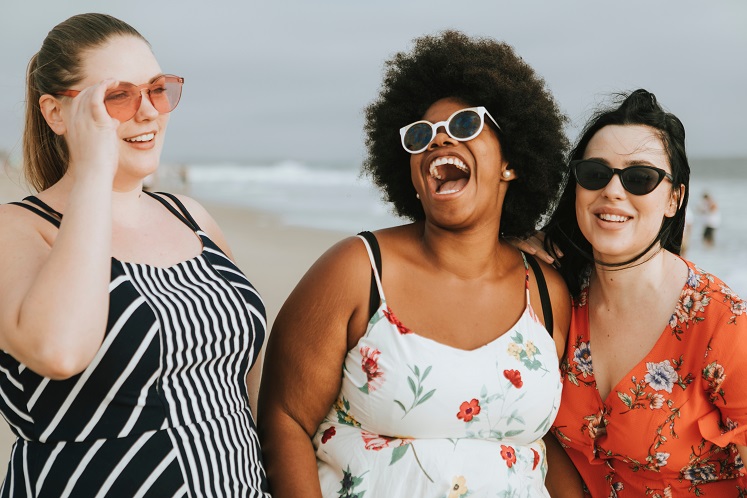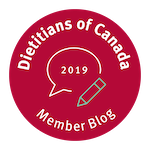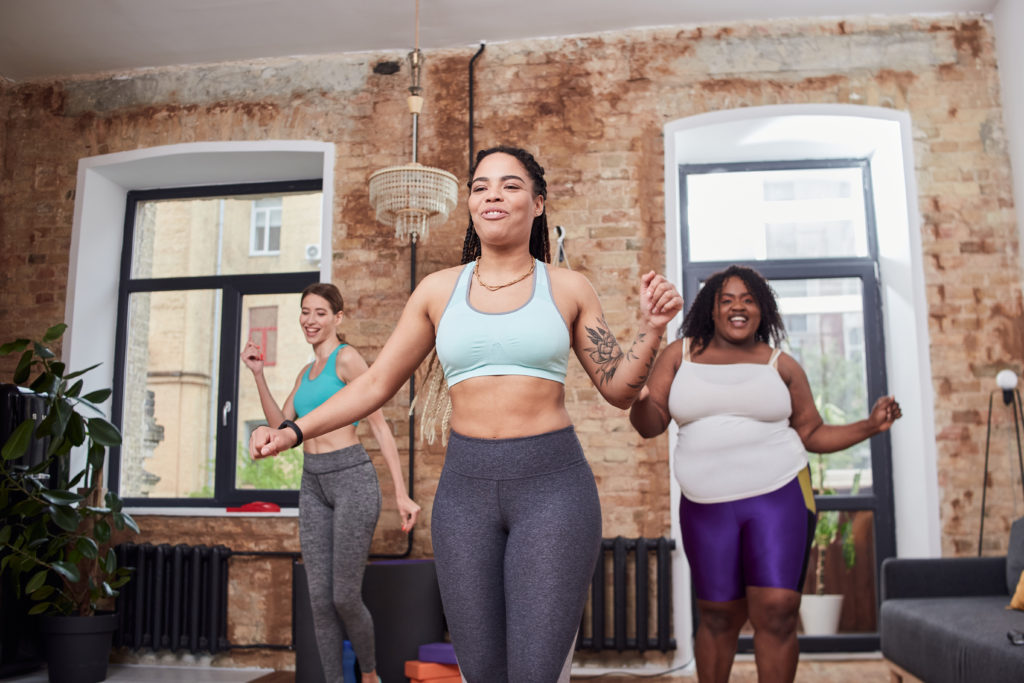We commonly struggle to feel comfortable in our bodies, but it doesn’t have to be that way! Read on to learn how to support ourselves and others to have a healthy body image.
Are you aware that in BC only 1 in 5 males and 1 in 10 females, aged 12-17, were very satisfied with their appearance?1
In fact, many youth are actively trying to change their bodies; one-third of “healthy weight” (BMI category) males were trying to gain weight, while 52% of “healthy weight” females were trying to lose weight.2 This pressure to change doesn’t go away as we age; over half of adult women are dissatisfied with their appearance or weight, and men are also feeling the pressure.
With this level of body concerns, how can we improve the situation? Read on to learn how to support ourselves and others to have a healthy body image.
What is a healthy body image?
Body image is what you believe, think, and feel about your body. It includes how you feel about your physical attributes and your abilities, as well as how you believe other people see you. Having a healthy body image means that you accept your body as it is, know that your appearance is not a measure of your worth, and practice behaviours that support your mental, physical and social well-being (regular meals, enjoyable physical activity, time with friends).
Body image is closely linked to self-worth, so the risks of having a negative body image are significant. When we don’t feel good about our bodies, it is more difficult to take care of ourselves. Effects of body dissatisfaction can include a higher risk of dieting and eating disorders, as well as increased risk of depression, social isolation, and exercise avoidance.3
Environment strongly influences body image
In Western societies, there is a strong social desire to achieve a certain body type–the “thin ideal” for women and “muscular ideal” for men. There has been a lot written about the problems with this narrow beauty standard, and despite evidence that this “ideal” is actually harmful and unattainable for most people, it persists.
Young people are learning from those around them what traits are important to be successful. The attitudes of family members and people at school, as well as media, affect children’s body image for better or worse. We each have an opportunity to positively influence our environment, if we can shift the way we talk about weight and health.
It is normal: |
It is common: |
|
|
Just because something is common doesn’t make it helpful or healthy. Let’s look at how we can respond to familiar situations in a way that supports healthy body image and self-esteem. It might be different than you think…
Putting it into practice: What you say and do matter!
1. Your coworker says, “You look great! Have you lost weight?”
How to respond:
Redirect the comment. “I’ve been taking dance classes, and I feel so much more relaxed now.”
Or, tackle it directly. “I understand you are trying to be kind, but when you comment on my weight, I feel self-conscious. Why is it better for me to be smaller?”
What your coworker could say instead:
Compliment skills, talents and personality, rather than appearance. Help others appreciate their whole selves, and foster a healthier workplace, by keeping conversations free from diet talk (comparing bodies and food choices).
Why this matters:
Associating weight loss with a positive appearance is an example of weight bias. Weight bias is a set of negative attitudes and beliefs related to body size, and is how our culture’s preference for the “thin ideal” shows up in our day to day lives. Weight bias most strongly harms people in larger bodies, leading to discrimination in workplaces, health care and daily life.
Praise for weight loss is both misplaced and harmful. Firstly, weight loss can be associated with serious health conditions, such as cancer, depression, frailty, and eating disorders. Additionally, biased language like this also affects bystanders of all sizes (especially children); they absorb the message that smaller bodies are better bodies, and may use disordered eating and over-exercise to achieve that goal.
2. You are shopping with a friend and they say, “I feel fat! I’m too big to wear that trendy top”
How to respond:
“Fat is not really a feeling; what else are you feeling? We all come in different shapes and sizes, and fat shouldn’t be a dirty word. You can wear whatever makes you feel confident and happy. Have you seen #losehatenotweight?”
What your friend could say instead:
Talk about what feelings are underneath those ‘fat feelings’. “Sometimes, when I compare myself to images on social media, I feel insecure and ashamed of my body, even though I know lots of those photos are edited. Why don’t I see more people that look like me on TV? I’m learning to care for my body instead of comparing to others, but it’s hard sometimes.”
Why this matters:
Fat is not a feeling, and although this word has a negative meaning for many people, it can also be just a descriptor. All bodies deserve to be comfortable and cared for, and limiting our self-expression and self-care (when we avoid what we like because of internalized weight stigma) negatively affects well-being. When we compare our bodies to a narrow ideal, we miss out on appreciating the diversity of humanity. The average model is taller and 26% lighter than the average Canadian woman.4 Additionally, digital photo manipulation in traditional and social media have created an even narrower image of the ideal look.
These unrealistic images affect our self-esteem and body image; critical comparison combined with weight bias allows “feeling fat” to replaces our actual feelings when we don’t measure up. Also, when they overhear these kinds of statements, young people are learning that it’s okay to insult your body, and that larger bodies deserve to be mistreated. Combat weight bias by regularly engaging in critical thinking and teaching media literacy. Use and share media with diverse representation.

3. Your child’s friend, age 11, says loudly “My mom says Sasha is getting fat and that’s not healthy. I’m never going to let myself get big like that.”
How to respond:
Normalize body changes and size diversity. “I sure hope you are going to get bigger than you are now; that’s a normal part of growing up! People come in all shapes and sizes, and being comfortable in your body is not about how big or small you are, it’s about having a positive attitude toward yourself.
Separate health from body size and ensure body-based teasing is not reinforced. “A healthy body doesn’t look a certain way. We don’t know how healthy someone is by what they look like, and it’s not respectful to talk about Sasha that way.” Plan to follow up with the friend’s and Sasha’s caregivers and your child’s teacher to share the resources listed below.
How to reduce weight bias among children:
Have age-appropriate conversations often. Connect diversity of body shapes and sizes to diversity in race, culture, ability, gender and sexual orientation. Appreciate, out loud, the things your body does for you. When you hear or see body-based judgements, stand up for targets of bullying. Support and listen when children express body dissatisfaction; let them know that their bodies are NOT the problem.
Why this matters:
Children learn early what traits are valued; staying silent means they pick up and internalize fat-phobic stereotypes. In fact, children as young as preschool associated larger-bodied children with more negative traits, and larger-bodied children more often experience weight discrimination from their peers, as well as coaches and parents.5 Puberty is an especially critical time to address that body changes are normal and positive.
Myths about weight need to be addressed with adults, too. Body size is a complex trait with many influences, and people should be free to pursue health at every size.
Support healthy body image: take action
These three examples illustrate a number of factors that support positive body image, including focusing conversations on skills, talents and personality instead of ‘diet talk’; diving below ‘fat feelings’ to uncover how unrealistic “ideals” harm; and normalizing body changes and size diversity. It may take time to change your dialogue and how you respond to comments that focus on appearance, but over time, it should become easier.
So what will you say differently?
Resources
Health Promotion and Eating Disorders Prevention
NEDIC (National Eating Disorder Information Centre) is a Canadian non-profit providing resources on eating disorders & weight preoccupation, as well as an eating disorders helpline.
Jessie’s Legacy provides eating disorders prevention education, resources and support for BC youth, families, educators and professionals.
Weight Neutral Approaches to Health
ASDAH: Health at Every Size
Eating Competence: building trust with food and your body
Promoting Healthy Body Image in schools
Book a Healthy Attitudes, Healthy Bodies, Healthy Schools workshop for teachers at your school
BC Dairy Lesson Plans: Health at every size: What’s Normal and Do you think you’re healthy?
NEDIC Beyond Images curriculum and tips
References
- Smith, A., Stewart D., Peled, M., Poon, C., Saewyc, E. and the McCreary Centre Society (2009). A Picture of Health: Highlights from the 2008 BC Adolescent Health Survey. Vancouver, BC: McCreary Centre Society. Page 24. Accessed August 7 2019 https://mcs.bc.ca/pdf/a_picture_of_health.pdf
- Smith, A., Stewart, D., Poon, C., Peled, M., Saewyc, E., & McCreary Centre Society (2014). From Hastings Street to Haida Gwaii: Provincial results of the 2013 BC Adolescent Health Survey. Vancouver, BC: McCreary Centre Society. Page 29. Accessed August 7 2019 https://www.mcs.bc.ca/pdf/From_Hastings_Street_To_Haida_Gwaii.pdf
- More, K.R., Phillips, L.A., Eisenberg Colman, M.H. (2019) Evaluating the potential roles of body dissatisfaction in exercise avoidance. Body Image. 28:110-114. Accessed August 7 2019 https://www.ncbi.nlm.nih.gov/pubmed/30654275
- Based on Stats Canada and TSM modelling agency data. Both sites accessed June 28 2019
- The Rudd Center for Food Policy and Obesity.Weight Bias and Stigma – Kids and Teens. Accesssed August 7 2019 www.uconnruddcenter.org/weight-bias-stigma-kids-and-teens




